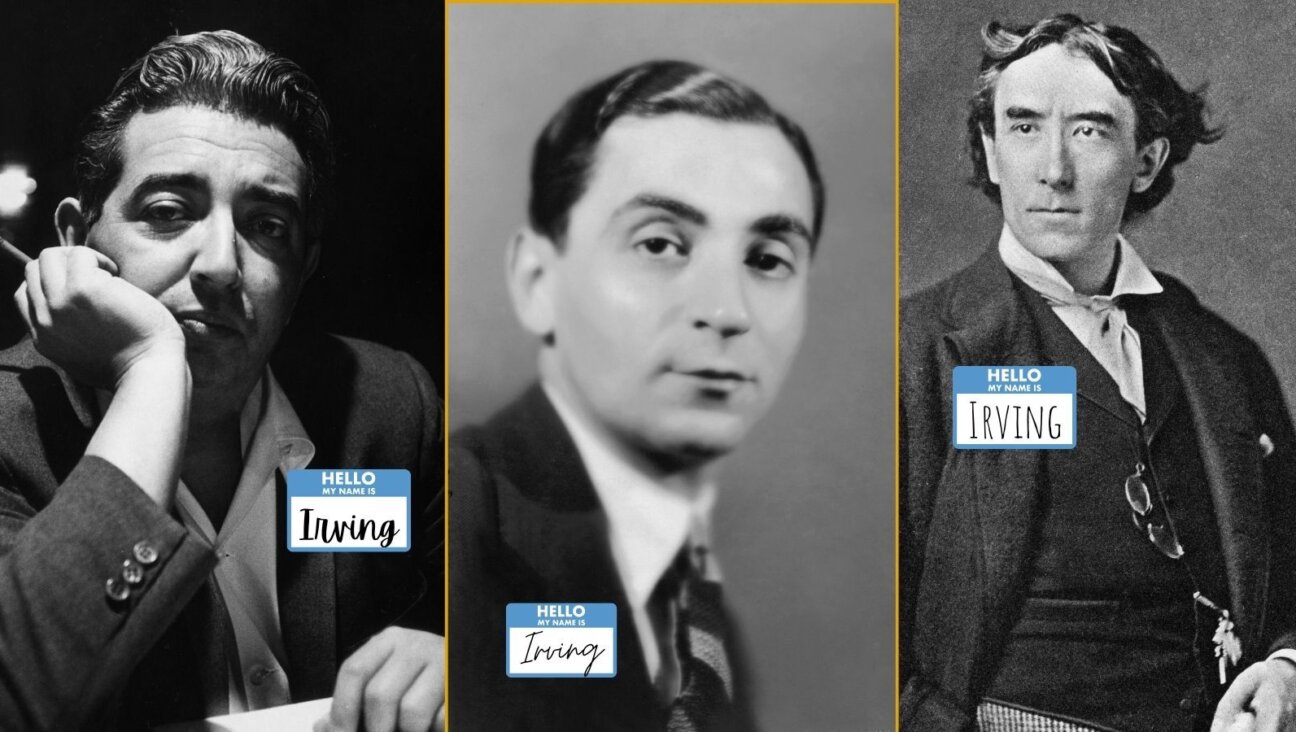The Secret Jewish History of Nostradamus

Graphic by Angelie Zaslavsky
This July 2 will mark the 450th anniversary of the death of Nostradamus (1503–1566), the French apothecary and supposed seer of Jewish origin. Born Michel de Nostredame in Saint-Rémy-de-Provence, France, his most famous work was “The Prophecies,” a collection of four-line texts that purported to tell the future. A recent translation by Richard Sieburth reminds us that Nostradamus’ lines seem to mean everything and nothing, which may be why he has been credited with foretelling the Great Fire of London, 9/11, Princess Diana’s death, and many other tragic events. A sample:
The ancient work shall be fulfilled in time:/The roof shall come crashing down on the lord: An innocent blamed for the mortal crime/The culprit hiding in the misty grove.
Adding to the muddle was Nostradamus’ habit of writing in French and Latin with some Greek and Provençal language thrown in. In an introduction, Sieburth likened Nostradmus’s doggerel to the “kind of folksy sententiousness one finds in Ezra Pound’s translations from the archaic Chinese of ‘The Confucian Odes.’” Overrating Nostradamus as a poet, or underrating Pound, Sieburth further described Nostradamus in an interview for “Brooklyn Rail,” as a “16th-century [Ezra] Pound — a poet engaged in writing a serial epic constructed of fragments, in Nostradamus’s case nearly 1,000 autonomous quatrains over 10 centuries that invite all kinds of paranoid and hermeneutic deliriums… I’d like to believe that in Nostradamus I have rediscovered a significant poet and ironist, not just the doomsday seer you hear about on the History Channel on late-night TV.” Quite unlike the anti-Semitic Pound, whose misdeeds are explored in A. David Moody’s new “Ezra Pound: Poet: Volume III: The Tragic Years 1939-1972”, Nostradamus was demonstrably influenced by his Jewish roots.
As a boy, he studied Hebrew as well as Latin and Greek. As his grandfathers were court physicians, he learned about herbal medicine, Kabbalah, and alchemy. Among them was Guy de Gassonet, who converted to Catholicism around 1455, when the ultra-Catholic name of Nostredame (Our Lady or Notre Dame in modern French) may have been imposed upon the family. The correct Latin form of the name should be Domina nostra or Nostra domina, but somehow Nostradamus would up with a name which might be translated as “We give (damus) the things which are ours (nostra)” or “We give (damus) medical remedies” (the plural of nostrum). Nostradamus’s grandmother refused to apostatize, so his grandfather was allowed to divorce her in 1463 and find a more religiously vacillating spouse, daughter of a Hebrew and Greek scholar.
Early French writers about Nostradamus who wished to discredit him mentioned his Jewish ancestry, whereas defenders staunchly denied it. By 1554, when Nostradamus started writing his prophetic-seeming books, he was well aware of his roots. In a letter to a friend,, he stated that “several volumes which were hidden for long centuries have manifested themselves to me.” Presumably he was referring to the Zohar, Sefer Yetzirah, and other esoteric texts. This awareness is noteworthy since during his time, non-clergy were not permitted to own Bibles, meaning that his knowledge of Scripture derived from excerpts quoted by the Roman historian Eusebius, the preacher Girolamo Savonarola, and others. In letters, Nostradamus referred to prophecy as an inherited Jewish gift: “My natural instinct bestowed upon me by my forebears…the inborn speech of mystical prognostication…much as seeing as if in a fiery mirror…as if by an obsessive vista.” The tradition by which Moses foresaw truth as if reflected in a clear mirror, whereas others saw it as a dull reflection, is detailed in the Yevamot tractate of the Talmud.
Retaining wariness about graven images, according to some early commentators, in 1534 Nostradamus warned a friar who was casting a bronze sculpture of the Virgin Mary that by doing so, he was only creating devilry. These and other possible lasting influences of Judaism on Nostradamus have been explored by archival researchers, including Danièle Iancu-Agou, author of a well-documented chapter in the new “Jews and Christians in Medieval Europe”. Yet even more striking is the obsessive attention paid to Nostradamus by an historical series of French anti-Semites.
One such was Édouard Drumont, author of the notorious “Jewish France,” blaming Jews for every possible ill. Drumont was pointedly mocked by the French Jewish author Bernard Lazare in his 1894 study, “Anti-Semitism: its History and Causes.”: “Sometimes Mr. Drumont comes out with a prophecy by Nostradamus who was, it seems, from the tribe of Issachar, which gives great value to his vaticinations. According to Nostradamus who, being Jewish, had no interest in claiming any such thing, everything would be resolved by a righter of wrongs who would be the ‘great Celtic man.’ I believe I noticed that Mr. Drumont sometimes sees himself as that ‘great Celtic man.’”
Such irony did not dissuade another anti-Semite, the novelist Louis-Ferdinand Céline, from latching onto Nostradamus as a loathed, yet compelling, figure. Céline’s polemic text “Bagatelles pour un massacre” (Trifles for a Massacre) (1937) declared:
“Beneath their skins, Jews keep all their black magic as their most precious treasure. In every era of upheaval, automatically loom up their prophetic traveling salesmen, seers, Jewish oracles…Nostradamus…Cagliostro… Mesmer… Marat… Marx… etc…These are the ‘world Hebraic cataleptics’…Their predictions, their warnings, are quite often admirable in correctness and pertinence. They make mistakes, but often they are right on the dot…Thus Nostradamus, around 1620, already announced very exactly the date of your great 1793 Revolution.”
Of course, by 1620 Nostradamus was long dead, but pointing out every factual error in Céline’s lunacy is a lifetime task. Comparably dupable readers pointed out that in one quatrain, Nostradamus used the word Hister, the Latin name for the Danube River. This was seized upon as an early allusion to Hitler. After 9/11, when nothing in Nostradamus seemed pertinent, a quatrain was entirely invented and posted on the internet, fascinating many readers.
Rabbi Adam Jacobs, Managing Director of Manhattan’s Aish Center, may have had the correct antidote in a 2011 essay about Jewish tradition of prophecy versus Nostradamus. Although 1.2 million prophets supposedly thrived during the 900 or so years between the eras of the first and second Temples, Moses ranked as the most eminent seer. Compared to Nostradamus, Moses made precise and unlikely prophecies, such as that Jewish people would be exiled from and return to their homeland. Rabbi Jacobs continued: “For instance, the Jews are told that they will be an eternal nation (Genesis 17:7, Leviticus 26:44 ). Already very unlikely, but all the more so considering the exile we discussed. On top of this we are told that we will always remain few in number (Deuteronomy 4:27), which is certainly a hindrance to eternality. So perhaps we’ll be small but so universally loved that the world will always take good care of us? Alas no. Indeed, the Torah predicts that we will be very unpopular in our host countries (Deut. 28:65-67).
By comparison, Nostradamus’ “Centuries,” even if partially inspired by Jewish lore, seems inauthentic stuff indeed.
Benjamin Ivry is a frequent contributor to the Forward.














